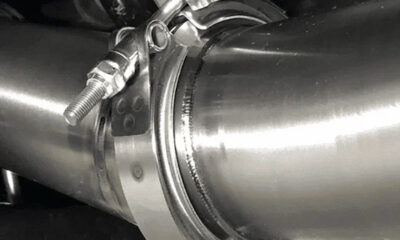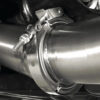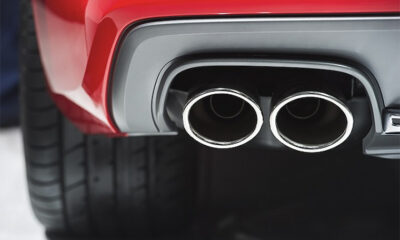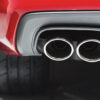Automotive
Car Anatomy: The Whole Story on Exhaust Systems
Cars are complex engineering feats consisting of dozens of systems and thousands of parts all working in unison. Engines produce the necessary power to turn the wheels, the suspension balances comfort and control and brakes ensure safe stops. This though, is just part of the story. Elaborate electrical and starter systems with batteries, starter motors and miles of wiring provide the initial power to turn engines over. And relatively simple exhaust piping removes spent gases so powertrains can keep on working.
The Role of Exhausts
Exhaust systems are integral vehicle components, designed to remove exhaust gases, control emissions, reduce noise and boost engine efficiency. Layouts vary and depend on engine size, cylinder configuration, fuel type and whether turbos are helping to produce power.
All exhausts, however, consist of metal piping that must redirect spent gases away from the engine and cabin, as well as emissions components such as catalytic converters and DPF filters to deal with toxic pollutants (carbon monoxide and nitrogen oxides, among others). Add mufflers and resonators to the picture for sound suppression, and you reach the complexity mirrored in the rest of the vehicle.
Limitations of Factory Systems
The missing links in all factory exhausts are durability and build. Car manufacturers cut corners, and exhausts are among the first to bear the brunt. This stems from mediocre mild steel, thin-walled piping and parts that are crush-bent to dodge high fabrication costs. The result is an exhaust system that’s suitable for everyday driving, but one that also shows its limitations if you want the most out of your car.
Crush-bent mild steel, with multiple bends has a harder time dealing with the higher temperatures under extreme engine loads, often leading to leaks and compromised airflow. And this kills engine efficiency by choking the powerplant of clean intake air.
Why Consider a Performance Exhaust?

Power loss, increased backpressure from lingering exhaust gases, higher fuel use, increased engine and exhaust temperatures (through sensor readouts), and punctured, corroded or exhaust pipes full of soot are a few signs you need a replacement. Rattling sounds from the undercarriage and fumes seeping into the cabin are other worrying indicators. And if you’ve tuned your vehicle for more power (installing high-flow air intakes, tweaked ECU maps, added forged internals, or slapped on bigger turbos), the factory exhaust will be the hindering factor that robs the engine of its full potential.
Opting for a performance exhaust system benefits your car in multiple ways:
- Boosted power output: Performance exhausts go for straighter and wider pipe designs to push spent gases. This reduces restrictive bends and backpressure that slow gases on their way out, and creates backstops to intake air with higher temperatures and pressure. By optimising airflow, aftermarket systems help engines breathe with cleaner and cooler oxygen-rich air. And this translates to improved combustion and more power and torque.
- Improved acceleration and throttle response: By freeing up space for intake air (and reducing engine temperatures), performance piping produces a more responsive engine. Acceleration is vastly improved, there’s more low-end torque, and higher top speeds add to driving fun.
- Durability: High-grade steel alloys (304 and 409) have higher temperature ceilings for improved heat cycling, meaning they won’t stain or rupture when pushing the car to its limits. The same goes for overall strength. The materials hold up against knocks, bumps and other road obstacles, and keep their sheen when inundated in water. This is miles ahead of crush-bent mild steel that prone to staining, punctures, dents and rust.
- Unique sound profile: A noticeable difference is the sound. Strict noise regulations have all but killed the sound that comes out of the tips, incorporating deadening materials in mufflers and resonators and taming exhaust velocities for lower decibels. Performance systems go the opposite route, with straight-through mufflers and piping that eases airflow and also goes louder. Brands additionally strive towards their own signature sound with technologies like muffler valving.
- Customisation: The vast catalogue of exhaust parts means tuners, car enthusiasts and everyday motorists can change any factory component they don’t like. This includes downpipes for improved scavenging, high-flow catalytic converters for controlled pollutant levels and faster airflow, muffler and resonator setups to tune the sound, and a variety of exhaust tips differing in shape, materials and finishes for more visual appeal.
Choosing a System That’s Right for Your Car
Compatibility, materials, build, sizing and overall prices should be your main concern when considering aftermarket exhausts. Compatibility ensures that parts or pre-assembled complete systems (axle-back, cat/GPF/DPF-back and header/turbo-back) fit the engine and car without major modifications. This has been simplified with modular and welded designs, ensuring a clean fit with accompanying mounting hardware. Compatibility also relates to overall engine output, the number of cylinder banks (single or dual exhausts) and if the engine uses forced induction (header vs turbo-back designs).
Materials in entry-level, aftermarket systems start with stainless steel for a balanced mix of performance, durability and value, and move onto exotics like titanium, Inconel and carbon fibre for improved strength, lower weight and higher heat resistance. These are used in separate parts or along all of the piping. Concerning sizing and overall pipe diameters, there are more benefits when upsizing exhausts by half an inch over stock diameters. 3″ and 3.5″ are the most common pipe diameters, with the latter tuned to the power output from bigger-displacement and already tuned engines.
Lastly, there are dozens of aftermarket brands. Choose local producers that won’t skimp on materials or advanced production methods such as mandrel-bending and heat treatment. Also consider brands with racing affiliations, as this speaks volumes about the R&D they’ve done. And those that offer proprietary technologies that boost sound or offer innovative designs.











